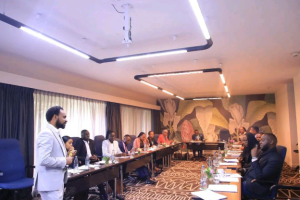“An awareness of our past is essential to the establishment of our personality and our identity as Africans.” This was Emperor Haileselassie I`s speech at the formation of the OAU, precursor of today’s AU. However, for decades, ruling elites seem to have preoccupied with undermining the history of predecessors while inking their history.
At different times, there were profound wisdom and systems of administrations that contributed to today’s Ethiopia. While the Aksumite, Zagwe and the Solomonic dynasties were at the helm of socio-political spheres of the northern and central parts of the country, various kingdoms also existed in the east, south, and west.
These included the Awusa of the Afar, the Damot of western Ethiopia, the Ifat/Adal Sultanate of eastern Ethiopia, the Emirate of Harar, the Gibe States, and the Leqa States in Welega, the Sheikhdoms in Benishangul Gumuz, the Kaffa kingdom as well as the Wolayta kingdom. Though the history of modern Ethiopia began in 1855, the effort to build a modern state thoughtfully started during the reign of Emperor Menelik II, as a literature show. All leaders who have administrated the country since then contributed to the creation of a modern state and political system. The palace has served as a principal center of its administration.
Whoever had a chance to cross Menelik II Palace used to spot a warning sign that reads: ‘Photography is prohibited’. Nobody knows what was on the palace’s premises. Giant eucalyptus trees have covered most tract of land of the palace, that had been, for long, what a passerby may observe. Some visitors who even attempted to take images of the gate and its surroundings had been met with serious punishments which included beatings, and soldiers who guarded the premises used to delete the images.
This trend has now been reversed for good. Following the launching of Andenet Park, any person who has a curiosity to know more about Ethiopian history can set his/her feet on the premises of the palace. The well-fortified palace has now fallen in the hands of developers who changed it to a breathtaking area that generate tourism earning to the public coffer.
The compound which looked a forgotten military camp for long also exhibits the asset and values of the different nations, nationalities, and peoples of Ethiopia. It gives lots of lessons to researchers and/or foreign visitors while children can learn more about their country and explore and experience the amusements at a playground.
The Park is also a hub where visitors experience local craft. According to Park’s description on its web, “different sculptures made of wood, mud houses, houses made of stone and wood are fascinating features of the garden. Being handmade is a special feature of this traditional garden. Each feature has used local knowledge without the intervention of any machine.”
It further states: “the area is devoted to demonstrating different indigenous plants and traditional building styles of rural Ethiopia to visitors. In this garden, mainly, different indigenous plants that can be utilized as medication, ornament, spice, food and beverage production, and furniture production are planted.”
The palace has also another impressive gift to its visitors which is the section where the brief history of the nation is presented in a recorded sound as well as in motion pictures. Some of the imprints of political leaders, including those who characterized one another as an arch-foe, are now housed in a single roof—the monarchs vs. socialism; the Revolutionary Democrats, and the incumbent that pursue a philosophy of Medemer.
The Ethiopian Herald Friday 27 December 2019
BY LEULSEGED WORKU




